Ninnaji Temple in Kyoto offers visitors a chance to explore its rich cultural heritage. At just $5.25 per ticket, it’s an affordable way to experience the temple’s serene grounds, impressive architecture, and rotating seasonal displays. With a flexible cancellation policy and easy online reservations, it’s never been simpler to plan a trip. Whether you’re captivated by the delicate cherry blossoms or the vibrant autumn foliage, Ninnaji Temple provides a tranquil escape from the bustling city streets. What awaits you within its historic walls?
Key Points
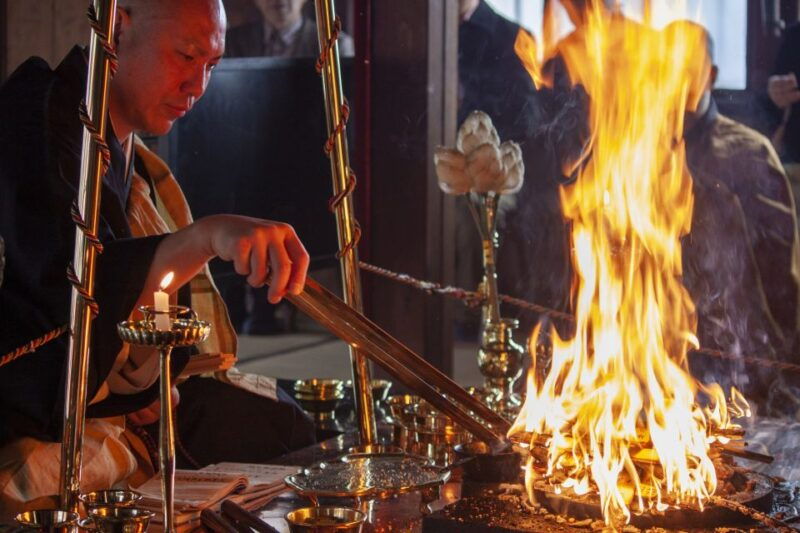
- Entry tickets to Ninnaji Temple in Kyoto are priced at $5.25 per person, with reservations available without upfront payment.
- The temple offers access to the Goten Palace, Reiho-kan Museum, and seasonal gardens, and is wheelchair accessible.
- Founded in 888 AD, Ninnaji Temple provides a serene, less crowded cultural experience with highlights like cherry blossoms and autumn foliage.
- Visitor reviews praise the temple’s stunning architecture, peaceful ambiance, and authentic cultural experience, with an overall rating of 4.3 out of 5.
- During cherry blossom season, an additional fee may be required for entry past the Chumon inner gate, with the funds supporting the temple’s preservation efforts.
Ticket Information
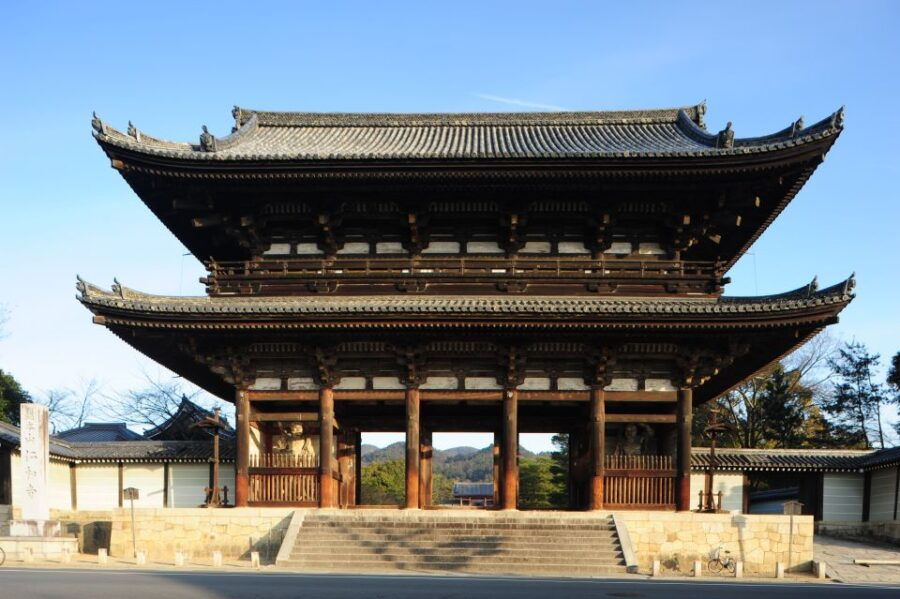
The Ninnaji Temple entry ticket is priced from $5.25 per person.
Reserving now and paying later is available, with no upfront payment required. Cancellation is free up to 24 hours in advance for a full refund.
The ticket is valid for 1 day and the temple is wheelchair accessible.
Visitors can explore the temple complex, including the Goten Palace and Reiho-kan Museum, and experience the seasonal beauty of cherry blossoms, vibrant foliage, and serene winter gardens.
Temple Experience
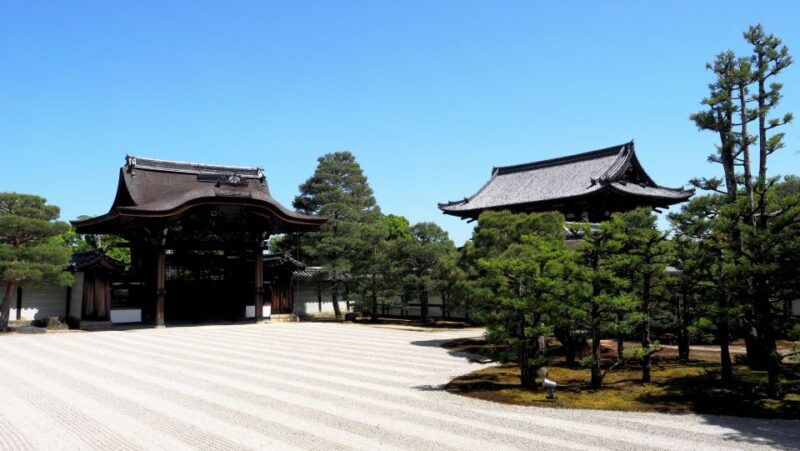
Founded in 888 AD, Ninnaji Temple welcomes visitors to explore its rich cultural heritage and seasonal beauty. The temple complex offers access to all areas, including the Goten Palace and Reiho-kan Museum. Visitors can witness the temple’s stunning seasonal transformations, from the cherry blossoms in spring to the vibrant foliage in fall and the serene winter gardens.
| Season | Highlights |
|---|---|
| Spring | Late-blooming cherry blossoms |
| Summer | Buddhist ceremonies with many priests |
| Fall | Temple buildings adorned in red and yellow foliage |
Visitors praise the calm atmosphere and cultural significance of Ninnaji Temple, in contrast to more crowded tourist sites.
Visitor Reviews
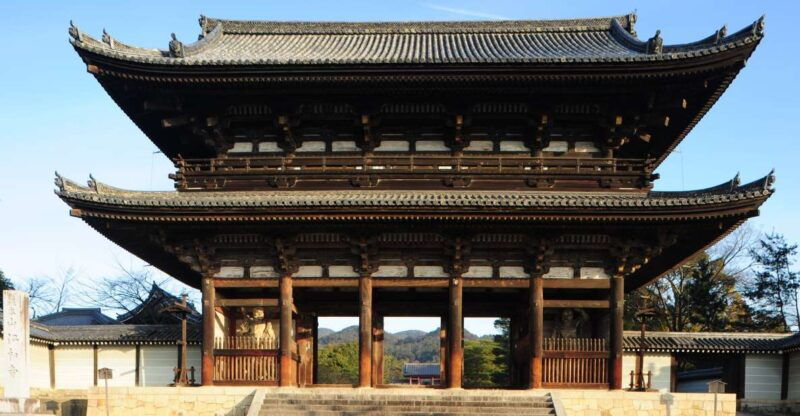
How do visitors rate their experience at Ninnaji Temple? Based on 511 reviews, the overall rating is 4.3 out of 5.
While some found ticket access unclear, others appreciated the calm atmosphere compared to more touristy sites.
The highlights include:
- Serene environment and cultural heritage
- Lack of crowds
- Beauty of the gardens
Visitors praised the temple’s tranquil setting and noted its contrast to the bustling crowds at other popular attractions.
The combination of stunning architecture, seasonal beauty, and peaceful ambiance seems to resonate with those who seek a more authentic cultural experience in Kyoto.
Opening Hours
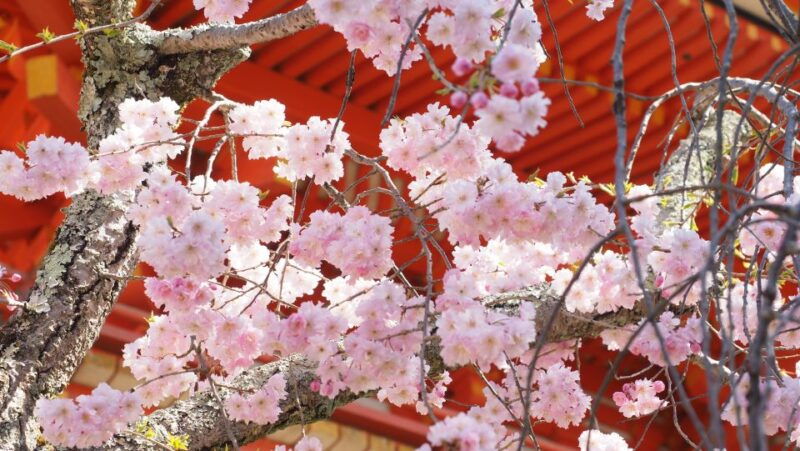
Ninnaji Temple is open from 9 AM to 5 PM during the March to November period, and from 9 AM to 4:30 PM from December to February.
The ticket booth closes 30 minutes before the temple’s closing time, so visitors should plan accordingly.
During the cherry blossom season, an additional fee may be required for entry past the Chumon inner gate, with the funds supporting the temple’s preservation efforts.
Individuals with a physical disability certificate can enjoy free admission, but they must present it at the ticket counter.
More Great Tours NearbySpecial Admission
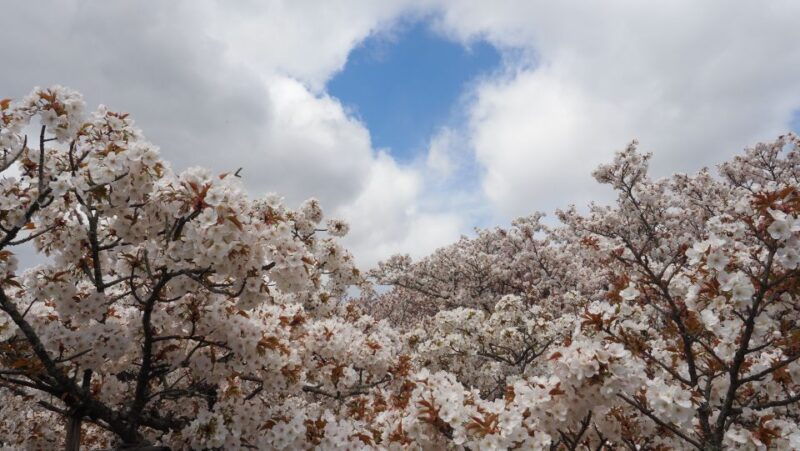
During cherry blossom season, visitors must pay an additional fee to enter past the Chumon inner gate at Ninnaji Temple. This special admission supports the preservation efforts of this historic site.
The benefits of the fee include:
- Maintaining the beautiful cherry trees and gardens for visitors to enjoy.
- Funding restoration and conservation projects to protect the temple’s cultural heritage.
- Enhancing the overall experience by limiting crowds and ensuring the tranquility of the temple grounds.
This fee is required for entry past the Chumon gate, but the rest of the temple complex remains accessible with the standard admission ticket.
Seasonal Highlights: Spring
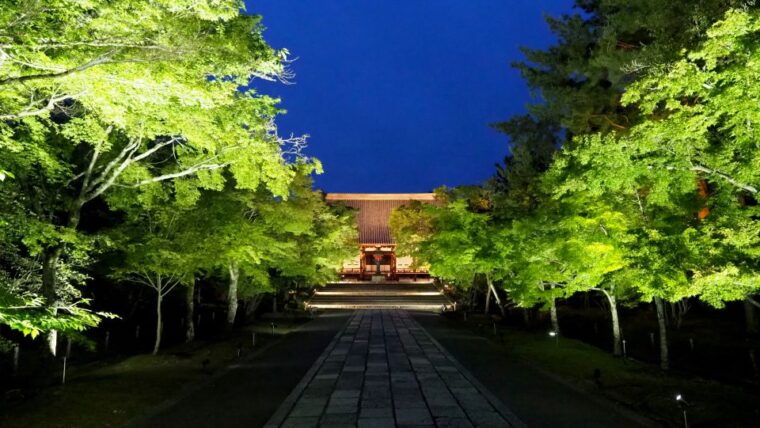
As spring arrives, visitors to Ninnaji Temple are greeted by the stunning late-blooming cherry blossoms that adorn the temple grounds. The picturesque Omuro sakura trees burst into vibrant pink, transforming the serene landscape into a breathtaking display of natural beauty.
| Seasonal Highlights | Description |
|---|---|
| Cherry Blossoms | Late-blooming flowers create a mesmerizing visual experience. |
| Cultural Events | Buddhist ceremonies attract many priests to the temple. |
| Peaceful Ambiance | The calm atmosphere offers a respite from crowded tourist sites. |
Visitors can enjoy the tranquil setting, marvel at the delicate blooms, and enjoy the rich cultural heritage of Ninnaji Temple during this enchanting time of year.
Seasonal Highlights: Summer
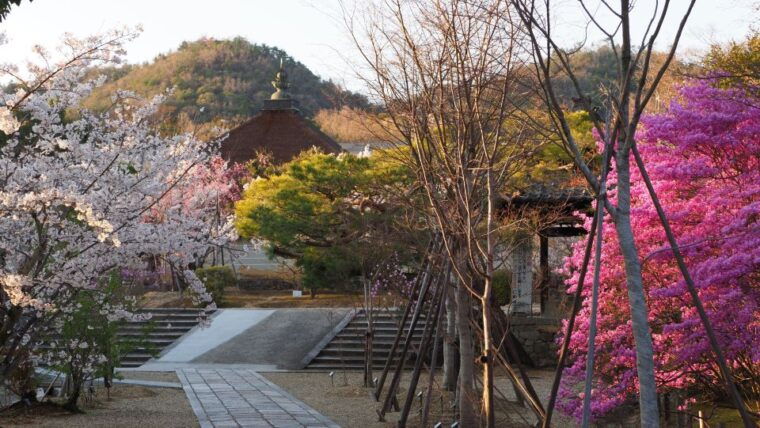
Though the vibrant cherry blossoms have faded, the summer months at Ninnaji Temple bring a different charm to the historic site.
During this season, the temple’s grounds come alive with Buddhist ceremonies that attract priests from across Japan.
Visitors can witness:
- Chanting and meditative rituals performed by the monks.
- Colorful processions through the temple’s halls and gardens.
- The tranquil atmosphere as the temple embraces the warmth of summer.
These summer experiences offer a unique glimpse into the temple’s spiritual heritage and the enduring traditions that have been upheld for centuries.
Seasonal Highlights: Fall and Winter
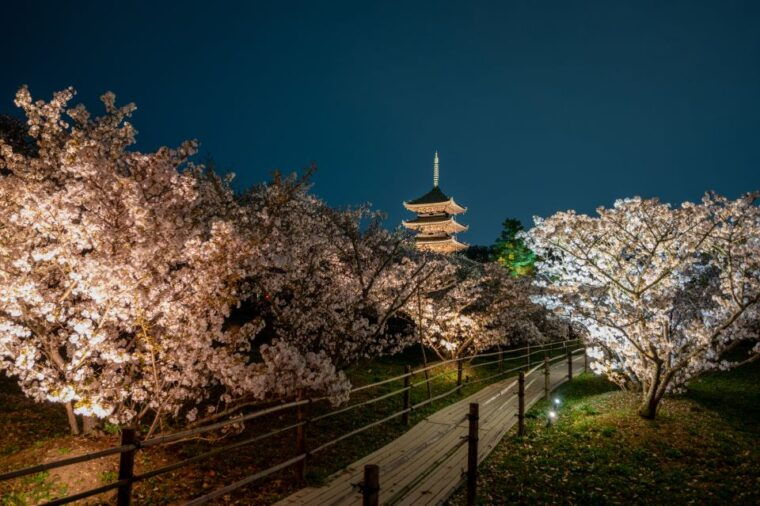
With the arrival of fall, Ninnaji Temple transforms into a vibrant tapestry of red and yellow hues. The temple buildings, once adorned in verdant greens, now blaze with autumn foliage, creating a breathtaking spectacle.
Visitors can enjoy the serenity of the Japanese garden, where the tranquil ponds and meticulously pruned trees offer a serene respite from the bustling city.
As winter settles in, the temple takes on a new charm, with the garden blanketed in a pristine layer of snow. Scenic views of the iconic Goten Palace provide a picturesque backdrop for those seeking a moment of quiet contemplation.
Things To Know
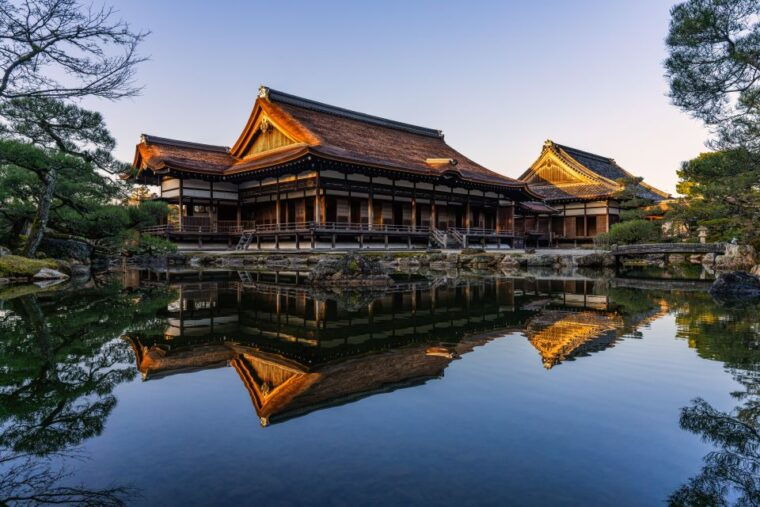
Is There an Audio Guide or Tour Available?
The ticket information doesn’t mention an audio guide or tour being available for the Ninnaji Temple experience. However, visitors may be able to explore the temple grounds independently or request a guided tour upon arrival.
Can I Bring Food and Drinks Inside the Temple?
Visitors are allowed to bring food and drinks inside the temple, though it’s best to enjoy the tranquil atmosphere and refrain from consuming them in the sacred spaces. Eating and drinking are generally permitted in the outdoor garden areas.
Are There Any Age Restrictions or Discounts for Children?
There are no age restrictions, and children under 12 receive discounted tickets. Families can explore the temple’s serene grounds and cultural heritage together. Some restrictions may apply during peak seasons to control visitor numbers.
What Is the Dress Code for Visiting the Temple?
There’s no strict dress code for visiting the temple, but modest and comfortable attire is recommended to respect the sacred site. Visitors should avoid overly revealing or casual clothing.
Are There Restroom Facilities Available on the Temple Grounds?
Yes, there are restroom facilities available on the temple grounds for visitors. Conveniently located throughout the complex, these restrooms provide a comfortable experience during your temple exploration.
Sum Up
Ninnaji Temple in Kyoto offers a unique cultural experience with affordable entry tickets. Visitors can explore the serene grounds, including the Goten Palace and Reiho-kan Museum, while seeing the temple’s seasonal beauty throughout the year. With a flexible cancellation policy and easy accessibility, it’s an ideal destination for those seeking a tranquil respite from the bustling city.
You can check availability for your dates here: